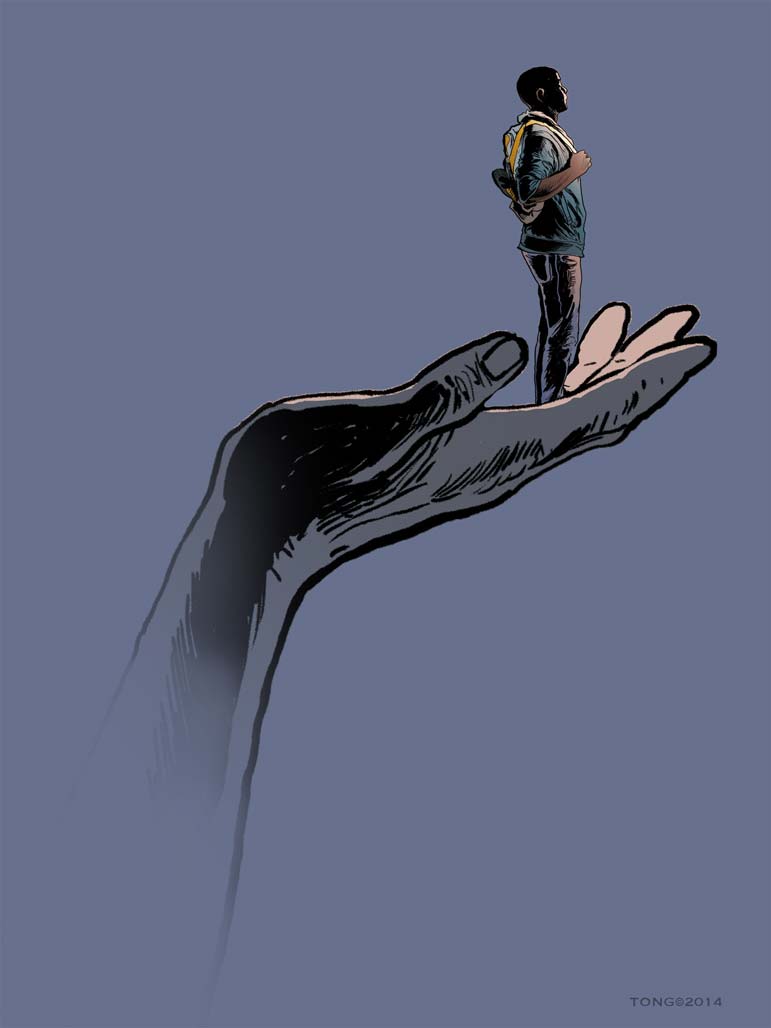
That's one way to read Judge Allison Burroughs' Sept. 30 opinion upholding Harvard's race-conscious undergraduate admissions process against a lawsuit from Asian American plaintiffs. They asserted that Harvard puts a de facto floor under African American and Latino admittances - at the cost of creating an unlawful ceiling on Asian Americans.
Asian Americans got in to Harvard's classes of 2009 through 2018 at a suspiciously consistent rate of 18 percent to 21 percent of each class, even as more and more of them applied annually. Burroughs acknowledged that admissions officers consistently awarded these students lower ratings for "personal qualities," somewhat offsetting their usually high test scores and grades.
But, she ruled, lower subjective assessments reflect insufficiently glowing high school recommendations or some other unknown factor, not bad faith by Harvard, whose admissions officers swore they used race only as a "plus factor," and gave each applicant "individualized," "holistic" review.
In fairness, Burroughs and Harvard were following convoluted Supreme Court doctrine on affirmative action, beginning with the pivotal 1978 Bakke case.
In the mid-1970s, the University of California at Davis medical school set aside 16 of 100 places in each class for African Americans, Asian Americans, Latinos and Native Americans, partly to compensate for historical discrimination against these groups.
A white man, Allan Bakke, argued this "quota" denied him admission, in violation of the equal protection clause of the 14th Amendment and Title VI of the 1964 Civil Rights Act, which bans racial discrimination in federally funded programs such as higher education.
(Students of color could bypass the 16 set-aside positions and compete for one of the 84 spots awarded based on test scores and grades. In 1973, 15 of the 84 went to Asian Americans. That was 17.8 percent, or nearly six times the Asian American share of California's population at the time.)
Justice Thurgood Marshall saw Davis's program as a legitimate corrective to systemic discrimination that still continued "within our lifetimes." To him, it mattered greatly that individual whites who might lose out were still not "treated as second-class citizens because of their color," as black Americans were.
Davis's quota troubled Justice Lewis Powell Jr. immensely, however. It targeted " 'societal discrimination,'" he wrote, "an amorphous concept of injury that may be ageless in its reach into the past." And it was unfair to people like Bakke, who "bear[s] no responsibility" for the harms to minorities that Davis sought to remediate.
The only rationale "compelling" enough to justify race-conscious admissions would be academic "diversity," Powell wrote, and then only if every applicant got individual consideration. Marshall and three other justices accepted Powell's compromise rather than see affirmative action banned altogether.
The rest is history - history which has, on balance, vindicated Marshall. He and others on the court saw little practical difference between Davis's "quota" and Powell's racial "plus factor," except that the former was more transparent and straightforward. One hundred and thirty pages of elaborate exegesis of the Bakke doctrine by Burroughs does very little to contradict this. To the contrary.
Davis was also more forthright about the justification for affirmative action: as a remedy, not for an insufficiently diverse educational climate, but for the lingering effects of a centuries-old caste system.
It was arguably truer to the intent of anti-discrimination laws, from the 14th Amendment to the Voting Rights Act, which were adopted not so much to enforce a pristine colorblindness as to eradicate caste.
Such arguments might not persuade the conservative critics of affirmative action, who, in the name of colorblindness, support the lawsuit against Harvard.
Yet, from a conservative point of view, both quotas and the compensatory rationale have certain advantages. The main one is that they are finite, as former Yale Law School dean Anthony Kronman argues in a new higher-ed critique, "The Assault on American Excellence."
Under a Davis-like system, Kronman writes, measurements of progress for black Americans and other minorities would loom larger in affirmative action debates, because they would bear on the continued validity of a compensatory rationale. "But they all become moot once the rationale for affirmative action is put on the ground of diversity," Kronman notes.
Pace Powell, the diversity rationale is comparatively "amorphous" and "ageless"; as a consequence, race-conscious admissions have changed from "an urgent but temporary expedient into a permanent fixture of academic life," Kronman writes.
Indeed, diversity has mutated into the touchstone of progressive ideology, which drives conservatives nuts, but about whose benefits "diversity of opinion . . . now barely exists" on campus, as Kronman tartly notes.
The Supreme Court may use the Harvard case to upend all of this, leaving both supporters and critics of affirmative action to ponder an alternative history of Bakke in which the justices did the right thing for the right reasons.
Sign up for the daily JWR update. It's free. Just click here.


 Contact The Editor
Contact The Editor
 Articles By This Author
Articles By This Author